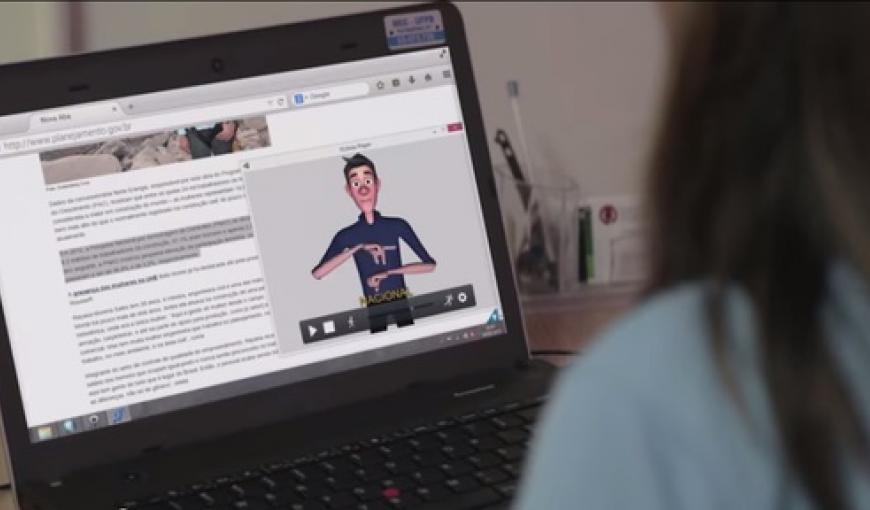Project supported by RNP inspires standard proposal for Brazilian Sign Language broadcast on TV
Brazilian Digital Television System Forum (in Portuguese, Fórum SBTVD) approved on July 13 the Brazilian standards proposal for the broadcast of information through Brazilian Sign Language (in Portuguese, Libras) on TV programs aired by television broadcasters. The document is based on the solution developed at the Digital Video Applications Laboratory (Lavid) of the Federal University of Paraíba (UFPB), which is supported by RNP since 2011.
The initiative got to our organization through the Working Groups public notice. After going through all the stages, it is already being structured as a service to be offered by RNP to the client institutions. However, the laboratory work began two years earlier, in 2009. “In that year, we began to study how we could include support to Brazilian Sign Language in Digital TV. We thought that the broadcast of automatically generated windows using avatars could be an alternative, considering few contents in TV feature Brazilian Sign Language, due to the high production cost. Additionally, we received the first deaf student of the Computer Science course, which intensified our efforts even further”, Brazilian Sign Language research coordinator in Lavid Tiago Maritan stressed.
Lavid responsibilities increased with the approval of the proposal by the SBTVD forum. “I believe that now we have the mission to maintain the technology in a continuous evolution. We are working so that, in its deployment, it meets the yearnings of the deaf community, of the agents that operate in the TV environment, and of the entire society”, Maritan highlighted, also underscoring RNP’s role in this project: “RNP was an essential partner for the development of this technology. With their support in the last four years, it has been possible to evolve the solution, improving the Brazilian Sign Language translator, the 3D avatar model, the audiovisual synchronization strategy, among others. Without RNP, certainly, we could not have gotten to where we are”.
Legal necessity
The project was developed to meet the determinations of ordinance no. 310, from June 2006, by the Ministry of Communications, which demands “accessibility resources, for disabled people, in the programming aired in sound and images and television retransmission services". According to the Brazilian Institute of Geography and Statistics (IBGE), 9.7 million Brazilians have some type of hearing impairment. Of these, two million have severe hearing impairment (data from 2010).
A window insertion with a Brazilian Sign Languages interpreter is only mandatory, currently, during the broadcasting time reserved to political parties, institutional campaigns by the government and public service. The Ministry of Communications decided to create a timeline for the broadcasters to gradually adopt the tools, in order to reach full accessibility by 2020.
